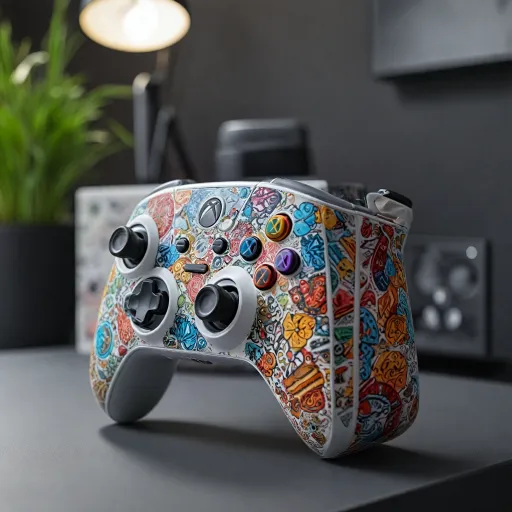
The evolution of Super Nintendo design
Tracing the Visual Journey of the Super Nintendo
The Super Nintendo Entertainment System (SNES), or simply the Super Nintendo, stands as an iconic piece of gaming history. From its launch, the evolution of its design reflects not only technological advancements but also shifts in cultural trends. In particular, the variation in colors across different markets—such as the NTSC and PAL regions—have captured the imagination of gamers and collectors alike.
Initially, the SNES was launched in Japan as the Super Famicom. The design boasted a vibrant color palette, featuring a series of multicolored face buttons on its snes controller. This choice was a bold departure from the more subdued aesthetics of its predecessors. When the SNES was released in North America, the design transitioned to a more refined look, with a primary focus on purple and gray tones. These alterations were guided by decisions made to align with the North American consumer preferences and sensibilities.
This evolution didn't stop just with the product's initial release. Over time, variations in the buttons and outer casing appeared, partly due to differences in regional manufacturing and aesthetic standards. As seen in several gaming forums, enthusiasts frequently comment on these distinct versions, appreciating the subtle differences in design and function.
The console's visual appeal was also influenced by third-party companies participating in its design and sale, aiming to cater to diverse markets. For example, the choice of different colors for power buttons was not just a matter of cosmetics but also a reflection of marketing strategies and user preferences over time. These design elements are still a captivating subject for collectors and those engaging in console design discussions on platforms like Facebook and Twitter.
Exploring the past allows us to appreciate the historical significance of consoles like the SNES. To delve deeper into other gaming console marvels, such as the mini Pac-Man arcade, adds another layer of understanding to this fascinating journey.
Why color matters in console design
The Importance of Color in Console Design
Color plays a crucial role in console design, influencing both aesthetics and user experience. For the Super Nintendo, the choice of colors was not just about visual appeal but also about creating a distinct identity in the gaming world. The iconic purple and gray color scheme of the North American version of the Super Nintendo Entertainment System (SNES) set it apart from its competitors and left a lasting impression on gamers.
Colors can evoke emotions and nostalgia, which is why the Super Nintendo's design has remained memorable over the years. The use of purple on the primary buttons and face buttons was a bold choice that resonated with many players, making the console instantly recognizable. This color scheme also helped differentiate the Super Nintendo from its Japanese counterpart, the Super Famicom, which featured a more colorful palette.
In addition to aesthetics, color can also impact functionality. For instance, the clear labeling of buttons and the contrast between different parts of the console can enhance usability. This is particularly important for gamers who need to quickly identify controls during intense gaming sessions.
Moreover, color variations can influence the market value of consoles, especially for collectors. Limited edition color schemes or regional differences, such as those between NTSC and PAL versions, can make certain models more desirable. Collectors often seek out these unique variations, sometimes paying a premium for consoles with rare color combinations.
For those interested in enhancing their gaming experience, exploring modifications like an RGB mod can offer a new perspective on classic consoles. Such modifications can breathe new life into older systems, allowing gamers to enjoy their favorite titles with improved visuals.
A closer look at Super Nintendo power buttons
Power & Aesthetic: The Iconic Buttons of Super Nintendo
When it comes to appreciating the nuances of console design, the Super Nintendo's power buttons certainly warrant recognition. Boasting a range of distinctive colors and a rather timeless aesthetic, these buttons are integral to the console's charm. Similar to the Nintendo Entertainment and Famicom systems, these power buttons embodied not just functionality, but also an element of the console's identity. In North America, for instance, the Super Nintendo Entertainment System (SNES) prominently featured a purple tone for its power and reset buttons—a choice that has sparked discussions on countless gaming forums. This distinct palette, compared to the subdued grays seen on European (PAL) or Japanese (Super Famicom) variants, contributes to a unique visual vocabulary that resonates with nostalgic gamers and collectors alike. A quick glance at any online sale or collector's site will reveal that Super Nintendo consoles sold with clear, original button configurations are often priced higher, adding to their collectible value. These buttons have not only stood the test of time in functional durability but have also retained their allure in the eyes of both dedicated collectors and casual enthusiasts. Discussions about attempting to enhance their gaming setup with such designs are not uncommon, similar to how enthusiasts explore ways to enhance their consoles with custom skins. The design and color of the power buttons, thus, are more than mere details. They are a testament to the time when Nintendo crafted consoles with both function and iconic design in mind. As the market continues to evolve with emerging color trends and the introduction of third-party versions, this interplay between utility and aesthetics remains relevant as ever. Click through to explore ways to enhance your Xbox Series S with customization options and appreciate how design details can elevate gaming experiences.Collector's perspective on color variations
Collector's Insight on Super Nintendo Power Button Variations
For collectors and gaming enthusiasts, every detail of a console like the Nintendo SNES, including its power buttons, holds unique appeal. When it comes to the Super Nintendo, the colors play a significant role in its allure. The power buttons, often in purple tones, were not just a functional part of the system but a distinct element of its design identity. Collectors pay close attention to these color variations, especially distinguishing between versions such as the NTSC and PAL systems. The North American version, known as the Super Nintendo Entertainment System (SNES), traditionally featured the iconic purple primary buttons, which fans appreciate for their nostalgic value. In contrast, the international PAL variant, or the Super Famicom in Japan, sported colorful face buttons, further emphasizing regional differences. With time, finding a Super Nintendo console with its original buttons in pristine condition between resale and shipping can add significant value for collectors. This extends not just to the console itself, but to other peripherals like the SNES controller. Understanding these nuances increases a collector's appreciation, making each console's specific details even more prized at sale. In gaming forums like Facebook and Twitter, retro gaming communities often share their discovery of different color schemes, offering valuable insights and sparking lively debates. For some, acquiring a complete set of both NTSC and PAL systems becomes a personal goal, exploring how these differences played into the broader entertainment system design philosophies. This attention to detail and differentiation is not only about aesthetics but also about connecting with a piece of gaming history. Each console's color variation tells a story about its time and place of origin, making the Super Nintendo's design choices a topic of endless fascination for enthusiasts worldwide.Comparing Super Nintendo with other consoles
Color Variations Across Gaming Consoles
When comparing the Super Nintendo with other gaming consoles, the color of the power buttons and overall design stands out as a unique feature. The Super Nintendo, especially in its North American version, is known for its distinctive purple and gray color scheme. This contrasts with the Super Famicom, the Japanese counterpart, which features a more colorful palette with primary buttons in red, yellow, blue, and green.
Other consoles, like the Sega Genesis or the original PlayStation, opted for more subdued color schemes, focusing on black and gray tones. These choices reflect different design philosophies and target markets. The Super Nintendo's colorful approach was not just about aesthetics; it was about creating a playful and inviting experience that resonated with its audience.
Regional Differences and Their Impact
The differences between the NTSC (North American) and PAL (European) versions of the Super Nintendo also highlight how color can be used to cater to regional preferences. The NTSC version's purple buttons became iconic, while the PAL version retained the colorful face buttons of the Super Famicom. These variations not only affected the console's appearance but also its appeal in different markets.
Collectors often seek out these regional variations, as they add a layer of depth to the history of gaming consoles. The color differences can significantly impact the value and desirability of a console on the collector's market, especially when considering factors like shipping and delivery conditions that might affect the preservation of these colors over time.
Third-Party Influence on Console Design
Third-party manufacturers also played a role in the color dynamics of gaming consoles. Many offered alternative controllers and accessories that deviated from the standard color schemes, allowing gamers to customize their setups. This trend continues today, with modern consoles offering a range of color options and limited editions that appeal to both casual gamers and dedicated collectors.
In conclusion, the color choices in console design, exemplified by the Super Nintendo, have a lasting impact on the gaming experience and collector's market. As we look to the future, it's clear that color will continue to be a significant factor in console design, influencing both aesthetics and user engagement.












